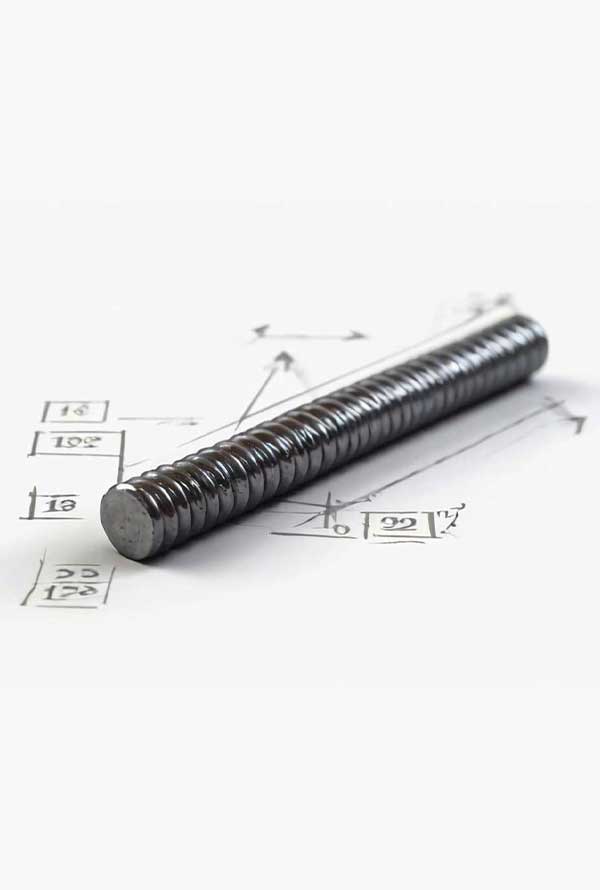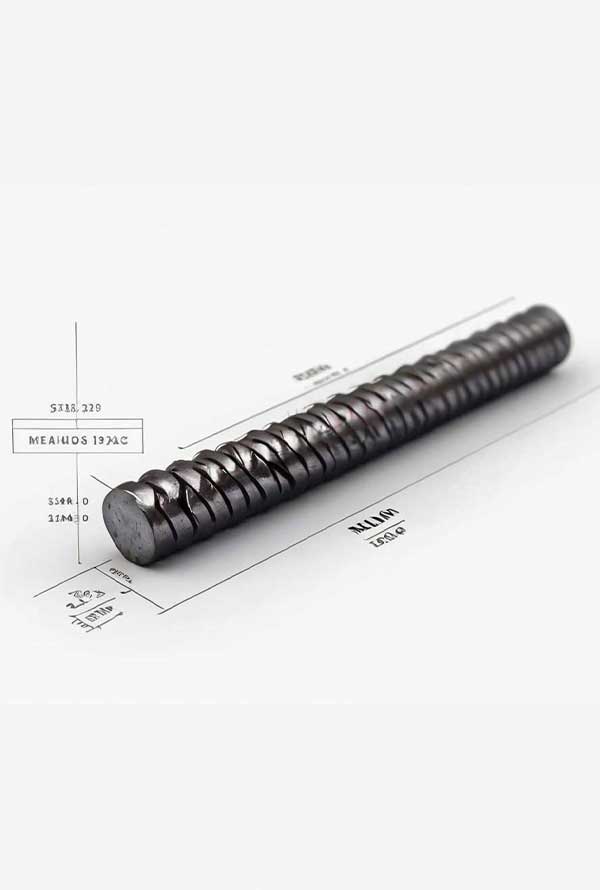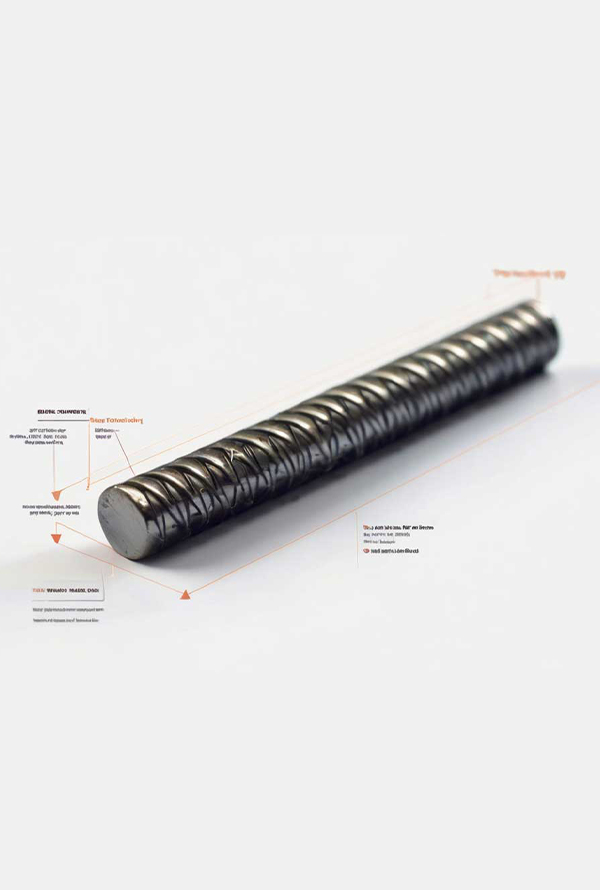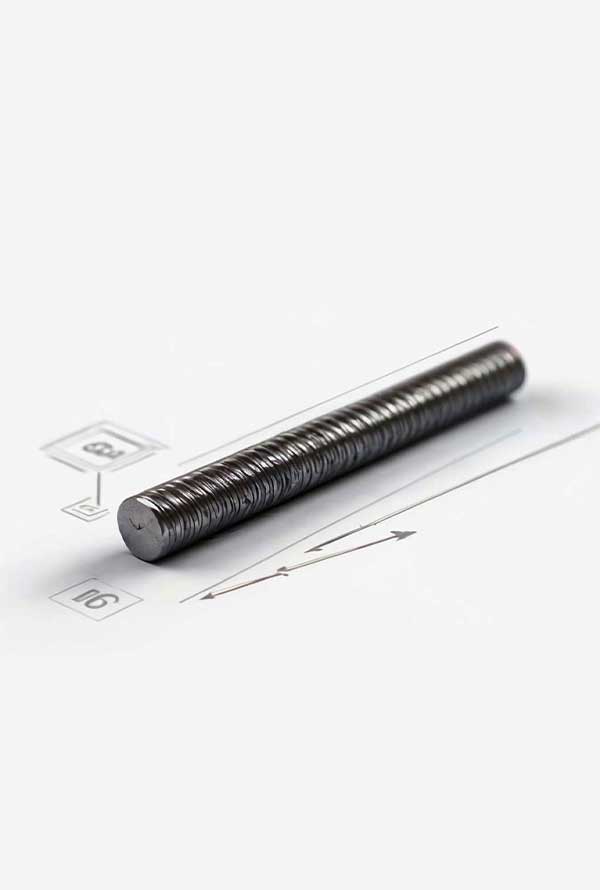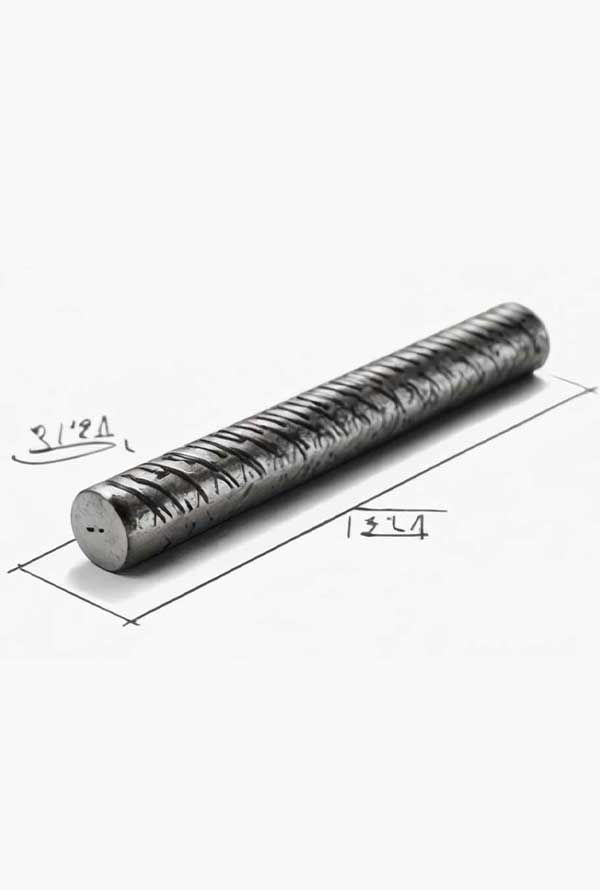Rebar 18 is produced and supplied to the market by several manufacturers, including Foolad Sirjan Hadid. Its price varies based on factors such as production process, brand reputation, and the final product quality from each factory. External factors such as exchange rates (especially the dollar), the level of supply and demand in the market, the cost of raw materials used in production, and the existing inflation rate in the economy play a significant role in determining its price.
In addition to external factors, internal factors related to the product also influence its price. These include the manufacturer’s brand, precise dimensions of the rebar, the grade of steel used in its construction, and other technical specifications of the product.
Price Fluctuation Trends of Rebar 18
The prices of steel products, including size 18 rebar, are influenced by numerous and complex factors that continuously change. Factors such as fluctuations in raw material markets, variations in supply and demand, domestic and international economic and political conditions, and unforeseen events can all impact price trends.
Methods for Predicting Rebar Prices
To forecast future prices of Rebar 18, various methods can be utilized. Analyzing price charts over past timeframes and identifying price patterns and historical trends helps detect recurring patterns and potentially forecast future prices.
The use of tools and techniques for technical analysis, such as moving averages, indicators, and chart patterns, aids in analyzing short- and long-term trends and predicting optimal market entry and exit points. Fundamental analysis, which examines key market factors such as supply and demand, government policies, exchange rates, and production costs, provides better insights into overall market trends and facilitates long-term price predictions.
Additionally, referring to specialized steel and metals platforms and reviewing expert reports and market analyses can offer valuable information about current market conditions and future trends.
Limitations of Prediction
Despite using various prediction methods, it is important to note that precisely forecasting future prices is highly challenging due to the complex and dynamic nature of the steel market. Unpredictable factors like political events, natural disasters, and sudden government policy changes can significantly impact price trends.
Forecasting the price of Rebar 18 requires a comprehensive analysis of various market factors. Combining different methods such as technical and fundamental analysis, along with studying related news and events, can aid in making better decisions for buying and selling rebar. However, investing in the steel market always involves risk, and it is recommended to consult experts in this field before making any decisions.
Features and Specifications of Rebar 18
Rebar size 18 is one of the widely used steel products in the construction and structural industries due to its high strength and durability, serving as a reinforcing element for concrete.
Types of Rebar 18
Rebar 18 is typically produced and sold in two types: plain and coated (epoxy). Plain rebar, due to its simpler production process, is less expensive and is often used in structures where extremely high strength is not required. Conversely, epoxy-coated rebar, with its epoxy coating, significantly increases resistance to corrosion and rust, making it suitable for critical structures such as bridges, high-rise buildings, and marine structures.
Factors Influencing Price and Specifications of Rebar 18
Various factors affect the price and specifications of Rebar 18. The diameter of the rebar, as one of the most important factors, directly impacts its weight and price. Increasing the rebar’s diameter results in higher weight and cost. Similarly, its length also influences weight, with longer lengths leading to higher weights.
The weight of the rebar is influenced by factors such as diameter, length, steel density, and the iron purity percentage. Higher iron purity enhances the rebar’s strength and quality, consequently increasing its price.
Additionally, the type of rebar coating impacts its price. Coated rebars are more expensive than plain ones due to their more complex production process and additional costs.
| Specifications of Rebar | Value |
|---|---|
| Nominal Diameter (d) | 18 mm |
| Nominal Cross-Sectional Area | 254 mm² |
| Weight per Meter | 2 kg/m (based on Stahl table) |
| Approx. Rib Height | 1.17 mm |
| Approx. Rib Width | 0.81 mm |
| Relative Rib Area | 0.056 |
Applications of Rebar Size 18
Due to its relatively high diameter and weight, Rebar 18 is often used in large-scale and load-bearing structures. Its technical specifications and high durability make it suitable for the following applications:
- Large Concrete Structures: Used in high-rise buildings, bridges, dams, tunnels, and industrial structures.
- Marine Installations: Applied in marine structures like docks, breakwaters, and oil platforms due to its high corrosion resistance.
- Highways and Roads: Reinforces concrete in highways and roads, especially in areas with heavy loading and harsh environmental conditions.
- Industrial Connections: Strengthens industrial connections and large metallic components.
- Other Uses: Utilized in parking ramps, underground structures, and other high-strength concrete constructions.
Key Consideration: The appropriate rebar size for each project depends on factors such as the type of structure, environmental conditions, load requirements, and construction codes. It is recommended to consult structural engineers and experts to select the suitable rebar size.
Types of Ribs on Rebar Size 18
Ribs are protrusions created on the surface of rebars to enhance the adhesion between concrete and steel, improving the structural tensile and flexural strength. The diversity in rib types directly affects the mechanical properties and applications of Rebar 18.
Spindle-Shaped Ribs
These ribs are spindle-like in shape, appearing as semi-circular projections. They provide excellent adhesion in standard concrete applications and are widely used in medium-load structures.
Lenticular Ribs
Featuring an elliptical design, lenticular ribs are specialized for high-stress environments. They offer superior bonding and are often used in critical constructions like bridges and high-rise buildings.
Continuous Helical Ribs
This rib design consists of a continuous helical pattern running along the rebar’s length. It ensures uniform stress distribution and is particularly effective in applications requiring resistance to dynamic loads.
Hybrid Ribs
A combination of two or more rib designs, hybrid ribs are tailored for specific projects that demand unique structural properties.
Applications of Ribbed Rebar
The type and quality of ribs significantly influence the suitability of Rebar 18 for specific projects. Below are some examples of applications for different rib types:
| Rib Type | Application |
|---|---|
| Spindle-Shaped | General construction, residential buildings. |
| Lenticular | Bridges, skyscrapers, and structures in seismic zones. |
| Continuous Helical | Industrial floors, airport runways, and infrastructure subject to vibration. |
| Hybrid | Tailor-made projects such as dams, tunnels, and advanced seismic retrofits. |
Best Practices for Handling and Storing Rebar 18
To maintain the quality and integrity of Rebar 18, proper handling and storage are essential. Below are some guidelines:
Handling
- Avoid dragging rebars on rough surfaces to prevent damaging the ribs.
- Use cranes or forklifts for transportation to ensure even weight distribution.
- Inspect rebars for any deformities before installation.
Storage
- Store rebars in a dry, elevated area to prevent moisture contact and rust formation.
- Cover rebars with waterproof sheets or tarpaulins during extended outdoor storage.
- Arrange rebars in stacks by size and type for easier inventory management.
Conclusion
Rebar 18 is a versatile and indispensable material in modern construction. Its various rib designs, resistance to corrosion (especially in epoxy-coated variants), and compatibility with multiple manufacturing standards make it a reliable choice for a wide range of structural applications. By adhering to best practices in selection, storage, and usage, professionals can maximize the performance and durability of this critical building component.
For further guidance or technical specifications, consulting with certified engineers and manufacturers is recommended.
